|
When you think of the Olympics you think of the sports: Speed skating, Bobsled. Snowboarding. Track, Gymnastics. Swimming. Tennis. Just to name a few. You may even think about some of the Olympians: Snowboarders Shaun White and Kelly Clark. Speed skater Apollo Ohno. Swimmers Michael Phelps and Katie Ledecky. Or even gymnast Simone Biles and sprinter Usain Bolt. But do you ever think about the science behind each sport? You should. Math and physics play a huge part in every part in the Olympics. Think about it. One of the most basic forces, friction, is a factor in everything an athlete does. What is friction? It’s the force that pushes back on you as you swim through the water or run through the air. Friction not only affects an athlete, but also the object they may be throwing, hitting, or kicking—like a baseball, a tennis ball, or a soccer ball. Movement of any kind deals with physics of air flow, engineering design, and (unfortunately) sometimes collision. The verdict? Athletes need to know a LOT of science to do well in their sports. Science is not just found in the activities themselves but also in the equipment they use and clothes they wear. Most of today’s superstar athletes rely on clothing and equipment enhanced with nanotechnology. What is nanotechnology? Nanotechnology is the science of the super small—microscopic even. One nanowire is 1,000 time thinner than a single strand of human hair. Now that is SMALL! Materials made with nanotechnology are stronger, more durable, and yet lighter and more flexible. Nanotechnology produces swimsuits that allow the athlete to glide through the water faster, golf clubs that hit the ball farther, and tennis rackets that flex more easily to provide the hard smash across the net. This innovative new technology has already been used in the Olympics. In 2008, swimmers Michael Phelps and Natalie Coughlin wore swimsuits that were created with nanofibers. These nanofibers are woven tightly so that the swimmer’s bodies become more streamlined (like a shark!) allowing them to glide through the water faster. In the 2014 winter Olympics, the U.S. speed skaters wore specially created vented suits (like the swimsuits—to reduce drag), and in the 2018 winter Olympics, the USA Snowboarders will be wearing snow gear inspired by the space program. Nanotechnology is a cutting-edge science that is changing the world of sports—and in particular the Olympics— as we know it. Will you make nanotechnology part of your game? The LZR Racer is a line of completion swimsuits manufactured by Speedo using a high-technology swimwear fabric. In March 2008, athletes wearing the LZR Racer broke 13 swimming world records. Much like other suits used for high competition racing, LZR Racers allow for better oxygen flow to the muscles, and hold the body in a more hydrodynamic position, while repelling water and increasing flexibility. Kathy Barnstorff via Wikimedia Commons Serena Williams uses a nanotech racket and Phil Mickelson uses nanotech technology in his game. Seems to be going well for both of them. (l) Wikimedia Commons (R) Photo by Siyi Chen via Wikimedia Commons 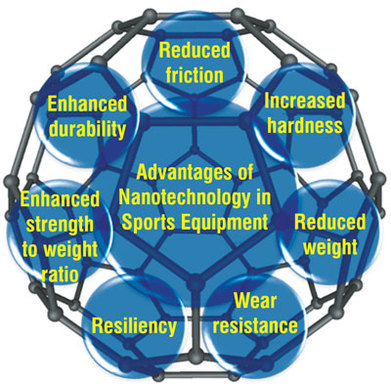 A graphic highlighting all of the ways nanotechnology enhances the effectiveness of sports equipment. Nanowerk via Wikimedia 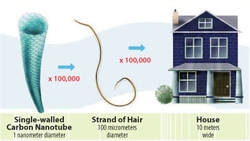 You would have to increase a carbon nanotube x100,000 to make it the size of a strand of hair. NIEH.gov 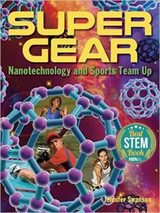 Want to know more? Jennifer Swanson's Super Gear: Nanotechnology and Sports Team Up was listed as one of the 2016 Best STEM Books by the National Science Teachers Association. Colorfully illustrated by photos, this book introduces "the science of the very small" as applied to sports equipment and clothing. MLA 8 Citation
Swanson, Jennifer. "The Science Behind the Olympics." Nonfiction Minute, iNK Think Tank, 7 Feb. 2018, www.nonfictionminute.org/the-nonfiction-minute/ the-science-behind-the-olympics.
0 Comments
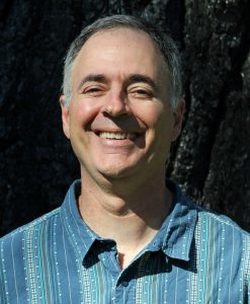 Sneed B. Collard III
Several years ago, I rode the world’s fastest elevator to the top of one of the world’s tallest buildings—Taipei 101. Shaped like an elegant stalk of bamboo, Taipei 101 soars 1670 feet above the island nation of Taiwan. However, the engineers who designed the building faced two monumental challenges. The first is that dozens of earthquakes shake Taiwan each year. The second is that in an average year, Taiwan gets hammered by three or four hurricanes, or typhoons. How, engineers wondered, could they keep people comfortable inside Taipei 101 when it swayed back and forth? More important, how could they keep the building from getting damaged or collapsing in a massive earthquake or 100 mile-per-hour winds? One solution: a damper ball. Damping devices are weighty objects that can reduce the motion of a bridge, building, or other structure. In the case of Taipei 101, engineers placed the damper ball near the top of the building—the part that sways the most. The ball is hung from thick cables inside the building and rests on giant springs or “dampers.” One of Isaac Newton’s basic laws of physics is that an object at rest tends to stay at rest—and the damper ball proves it. Every time Taipei 101 starts swaying, the damper ball wants to stay where it is and “pulls back” on the building, reducing how far the building moves. When the building sways in the opposite direction, the process repeats itself—but in the reverse direction. Of course the building also pulls on the damper ball, but the ball’s movements are restricted by the dampers it presses against. Does the system work? You bet. The damper ball inside of Taipei 101 reduces the building’s movement by 30 to 40 percent! Of course not just any damping device could protect an enormous building like Taipei 101. Taipei’s damper ball weighs 1.5 million pounds—as much as two fully-loaded jumbo jets. It is composed of 41 circular steel plates that stand taller than a one-story house. In 2008, when a giant earthquake hit mainland China, the people of Taiwan could feel it hundreds of miles away. The damper ball did its job, resisting Taipei 101’s movement, keeping the building safe. During Typhoon Soudelor in 2015, the damper again worked like a charm, protecting the building against 100- to 145-mile-per-hour winds. Besides protecting Taipei 101, the damper ball has become a major tourist attraction. Each year, thousands of visitors ride to the 89th floor. They take selfies next to the damper ball. They even take “Damper Baby” souvenirs home with them. If you’re ever lucky enough to visit Taiwan, check it out!
 The damper ball is visible between the 89th and 91st floor of Taipei 101 and has become an attraction for tourists. 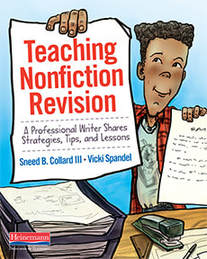 Sneed B. Collard III is author of more than eighty award-winning children’s books as well as a new book for educators, Teaching Nonfiction Revision: A Professional Writer Shares Strategies, Tips, and Lessons. Sneed is a dynamic speaker and offers school and conference programs that combine science, nature, and literacy. To learn more about him and his talks, visit his website,. To learn more about the damper ball and watch how it performed during Typhoon Soudelor, check out this article and video: http://www.thorntontomasetti.com/taipei-101s-tmd-explained/ MLA 8 Citation
Collard, Sneed B. "Damping Down Danger." Nonfiction Minute, iNK Think Tank, 10 01 2018, www.nonfictionminute.org/the-nonfiction-minute/ Damping-Down-Danger. 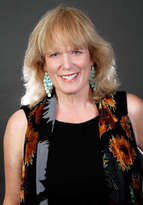 Which lunch food has a shape that resembles a falling raindrop? a. orange b. potato chip c. hot dog d. hamburger bun e. all of the above f. none of the above If you chose (f), you’re like most people who think raindrops are shaped like tears. If you chose (e), you’re probably just hungry. In either case you’re wrong. That leaves us with lunch. Let’s start from the top. Choice (a), orange, is a sphere. Water droplets are spherical because water is cohesive, meaning it sticks to itself. The “skin” that holds the drop together is surface tension and the reason insects can walk on water. If you chose (a), you made a logical choice based on the properties of water, but you are wrong. Notice that you were not asked to identify the shape of a raindrop sitting on a leaf. You were asked to identify the shape of a falling raindrop. (Always read questions carefully!) Moving down the list to (b), we encounter the potato chip. Potato chips come in many shapes, ranging from relatively flat to completely crumpled. Have you ever seen a raindrop that looks even a little bit like a potato chip? If you chose (b) you are wrong, but have a good sense of humor. Choice (c), hot dog, is an interesting option. Could a spherical drop of water morph into the cylindrical shape of a hot dog? After all, a hot dog is a cylinder with a hemisphere (half sphere) on each end. Could a water droplet in free fall separate itself into two hemispheres with a long drip of water in between? Although this is an imaginative idea, the laws of physics make it impossible. Choice (d), hamburger bun, is the only remaining choice, and is the correct answer. Here’s why: A raindrop is acted upon by three forces: gravity, buoyancy, and drag. Gravity is the force that pulls the drop toward the earth, while buoyancy of the surrounding air pushes it upward and keeps it from falling. When the force of gravity is greater than the force of buoyancy, the raindrop falls. The air around it creates drag, slowing the drop down to its maximum speed. In the process, the sphere is distorted into a shape that resembles a hamburger bun. Got it? Now, you may go to lunch.  Bugs bite, drink blood, and rob food from gardens and fields. They can even kill plants, animals, and, occasionally, people. Is bugging a crime? In her latest book, Bug Shots, Alexandra Siy compiles "rap sheets" on several of the major categories of bugs and takes a very close look at some of the types of insects in an engaging text. For more information, click here. Alex Siy is a member of iNK's Authors on Call and is available for classroom programs through Field Trip Zoom, a terrific technology that requires only a computer, wifi, and a webcam. Click here to find out more. MLA 8 Citation
Siy, Alexandra. "The Race for the Sky." Nonfiction Minute, iNK Think Tank, 7 Dec. 2017, www.nonfictionminute.org/ A-Raindrop-Quiz. 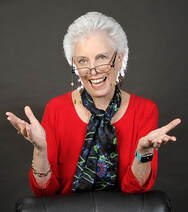
No one wants to mess with someone who is super strong! Even if you’re undersized, especially if you’re undersized, you’ve got to try the two tricks in this Minute .
Here’s the first challenge: Bet another person can’t remove your hand from the top of your head. The challenge-taker must try to remove your hand according to your rules. Otherwise, it’s cheating. Sit on the floor. Place your hand with your fingers spread apart firmly on the top of your head. Have your friend grasp your lower arm next to your elbow. Now let him/her pull upward, trying to lift your hand from the top of your head. Chances are excellent that you’ll be lifted off the ground before your palm parts from its perch. Why is this so? If you’ve studied simple machines you may have learned about a mechanical advantage. That’s how a simple machine such as a lever can multiply your strength or speed. In this case, you’re putting your friend at a mechanical disadvantage. Your arm is a lever. In order to move your hand from the top of your head, you need an upward force near your hand. If that force is delivered as far away from your hand as possible, it loses its power. It’s easy to remove your hand if you deliver an upward force near your wrist. But at your elbow? No way! Got it? Here’s another trick with the secret sauce of physics. Bet you can keep ten people from shoving you into a wall. Place your hands against a wall with your fingers spread and your arms outstretched. Have ten people line up behind you, hands on the shoulders of the person in front of them. At the count of three, have everyone push on the person in front of them as hard as they can. I mean, really lean in. You, hero of the day, can hold them all off and not bend your elbows. Why? Actually, each person absorbs the force of the person behind them so that you are not experiencing the cumulative force of ten people, only the force of the person directly behind you. So pick someone smaller than you to be that first person. If you’re not super strong, you can still be super smart. If you don’t want to try this yourself, look at my videos of other people doing the challenges. Maybe you’ll change your mind. 
If you like these bets, check out Vicki Cobb’s new release of We Dare You! You might want to join her We Dare You! National Video Project and make more videos yourself from her book. Learn more about it here.
Vicki Cobb is a member of iNK’s Authors on Call. You can invite her to your class through the magic of videoconferencing. Learn more about it here.
MLA 8 Citation
Cobb, Vicki. "How to Make Your Friends Think You're Super Strong." Nonfiction Minute, iNK Think Tank, 23 Mar. 2018, www.nonfictionminute.org/ the-nonfiction-minute/How-to-Make-Your-Friends-Think-Youre-Super-Strong. 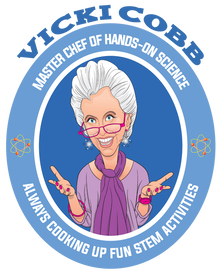 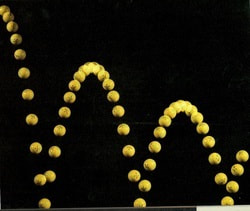 You can’t play tennis unless you know where the ball will be after it bounces. You can’t pass a basketball unless you understand how to angle a bounce so that it goes where you want it to go. As long as the court surface is smooth and flat, a ball’s bounce is very predictable. Its path depends on gravity and on the strength and direction of the force that sets the ball in motion. Thanks to high speed photography we can get a closer look at a bouncing ball. This is a multiple exposure photograph of a bouncing ball. It was taken in complete darkness with the camera shutter open while a high-speed flashing light, called a stroboscope or strobe, flashed 30 times a second. Each flash produced an image. Here’s what you can learn from this photo: The ball is moving fastest where the images are farthest apart and slowest where they are closest together. When the ball is falling, it speeds up. After it bounces and moves opposite the pull of gravity, it slows down at exactly the same rate as it sped up when it was falling until it stops for an instant and starts falling again. Each time it collides with the ground, some energy is lost. That’s why each bounce loses altitude. If the bounce were perfect, no energy would be lost, every bounce would be as high as the last and the ball would bounce forever. A strobe also captures the split second when a tennis ball is struck by a racket. The collision flattens the ball, and stretches the strings and distorts the frame of the racket, all in .005 seconds. If these objects kept their distorted shapes, most of the force of the collision would be absorbed. But they are elastic—they restore themselves to their original shapes after they collide. This restoring force is transferred to the ball to change its direction and help add to the speed of the athlete’s swing. The fastest serve leaves a racket at 130 miles an hour. In a rally, a ball-racket collision changes direction of the ball so it is not as fast as a serve, maybe 70 miles per hour. Since the distance between images made by a strobe tells how fast an object is moving, strobes are part of the instruments used to measure the speed of balls from a tennis racket and a baseball pitcher. 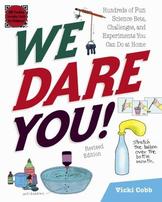 Would you believe that you could throw an egg across the room without breaking it? Burn a candle underwater? Vicki Cobb's We Dare You! is a gigantic collection of irresistible, easy-to-perform science experiments, tricks, bets, and games kids can do at home with everyday household objects. Thanks to the principles of gravity, mechanics, fluids, logic, geometry, energy, and perception, kids will find countless hours of fun with the selections included in this book. If you would like to make a We Dare You Video, click here. Vicki Cobb is a member of iNK's Authors on Call and is available for classroom programs through Field Trip Zoom, a terrific technology that requires only a computer, wifi, and a webcam. Click here to find out more. MLA 8 Citation
Cobb, Vicki. "A Bouncing Ball Like You've Never Seen." Nonfiction Minute, iNK Think Tank, 5 Feb. 2018, www.nonfictionminute.org/the-nonfiction-minute/ a-bouncing-ball-like-you've-never-seen. |
*NEWS
|
For Vicki Cobb's BLOG (nonfiction book reviews, info on education, more), click here: Vicki's Blog
The NCSS-CBC Notable Social Studies Committee is pleased to inform you
that 30 People Who Changed the World has been selected for Notable Social Studies Trade Books for Young People 2018, a cooperative project of the National Council for the Social Studies (NCSS) & the Children’s Book Council
Categories
All
Abolitionists
Adams Janus
Adaptation
Adaptations
Adkins Jan
Advertising
Aerodynamics
Africa
African American History
African Americans
Africa West
Agriculture
Aircraft
Air Pilots
Air Pressure
Air Travel
Albee Sarah
Alchemy
Alligators
Allusion
American History
American Icons
Amphibians
Amundsen Roald
Anatomy
Ancient
Ancient Cultures
Anderson Marian 1897-1993
Animal Behavior
Animal Experimentation
Animal Intelligence
Animals
Animation
Antarctica
Ants
Apache Indians
Apes
April Fool's Day
Architecture
Argument
Arithmetic
Art
Art Deco
Artists
Arts
Asia
Astronauts
Astronomy
Athletes
Atomic Theory
Audubon Societies
Authors
Autobiography
Automobiles
Aviation
Awards
Bacteria
Baseball
Battuta Ibn
Bears
Beatles
Beavers
Bees
Biodegradation
Biography
Biology
Biomes
Biomimicry
Biplanes
Birds
Black Death
Black History
Blindness
Blizzards
Bombs
Bonaparte Napoleon
Boone Daniel
Botany
Brazil
Bridges
Brill Marlene Targ
Brooklyn Bridge
Brown John
Buffaloes
Building Materials
Butterflies
Caesar
Caesar Julius
Caissons
Calculus
Calendars
Cannibal
Capitals
Caravaggio
Carbon Dioxide
Carnivores
Carson Mary Kay
Cartoons & Comics
Carving (Decorative Arts)
Cascade Range
Castaldo Nancy
Castles
Castrovilla Selene
Cathedrals
Cats
Caves
Celts
Cemeteries
Chemistry
Children's Authors
Child Welfare
China
Choctaw Indians
Christmas
Chronometers
Cicadas
Cinco De Mayo
Ciphers
Circle
Citizenship
Civil Rights
Civil Rights Movements
Civil War
Civil War - US
Climate
Climate Change
Clocks And Watches
Clouds
Cobb Vicki
COBOL (Computer Language)
Code And Cipher Stories
Collard III Sneed B.
Collectors And Collecting
Color
Commerce
Communication
Competition
Compilers
Composers
Computers
Congressional Gold Medal
Consitution
Contests
Contraltos
Coolidge Calvin
Cooling
Corms
Corn
Counterfeiters
Covid-19
Crocodiles
Cryptography
Culture
Darwin Charles
Declaration Of Independence
Decomposition
Decompression Sickness
Deep-sea Animals
Deer
De Medici Catherine
Design
Detectives
Dickens Charles
Disasters
Discrimination
Diseases
Disney Walt
DNA
Dogs
Dollar
Dolphins
Douglass Frederick 1818-1895
Droughts
Dr. Suess
Dunphy Madeleine
Ear
Earth
Earthquakes
Ecology
Economics
Ecosystem
Edison Thomas A
Education
Egypt
Eiffel-gustave-18321923
Eiffel-tower
Einstein-albert
Elephants
Elk
Emancipationproclamation
Endangered Species
Endangered-species
Energy
Engineering
England
Englishlanguage-arts
Entomology
Environmental-protection
Environmental-science
Equinox
Erie-canal
Etymology
Europe
European-history
Evolution
Experiments
Explorers
Explosions
Exports
Extinction
Extinction-biology
Eye
Fairs
Fawkes-guy
Federalgovernment
Film
Fires
Fishes
Flight
Floods
Flowers
Flute
Food
Food-chains
Foodpreservation
Foodsupply
Food-supply
Football
Forceandenergy
Force-and-energy
Forensicscienceandmedicine
Forensic Science And Medicine
Fossils
Foundlings
France
Francoprussian-war
Freedom
Freedomofspeech
French-revolution
Friction
Frogs
Frontier
Frontier-and-pioneer-life
Frozenfoods
Fugitiveslaves
Fultonrobert
Galapagos-islands
Galleys
Gametheory
Gaudi-antoni-18521926
Gender
Generals
Genes
Genetics
Geography
Geology
Geometry
Geysers
Ghosts
Giraffe
Glaciers
Glaucoma
Gliders-aeronautics
Global-warming
Gods-goddesses
Gold-mines-and-mining
Government
Grant-ulysses-s
Grasshoppers
Gravity
Great-britain
Great-depression
Greece
Greek-letters
Greenberg Jan
Hair
Halloween
Handel-george-frederic
Harness Cheryl
Harrison-john-16931776
Health-wellness
Hearing
Hearing-aids
Hearst-william-randolph
Henry-iv-king-of-england
Herbivores
Hip Hop
History
History-19th-century
History-france
History-world
Hitler-adolph
Hoaxes
Holidays
Hollihan Kerrie Logan
Homestead-law
Hopper-grace
Horses
Hot Air Balloons
Hot-air-balloons
Housing
Huguenots
Human Body
Hurricanes
Ice
Icebergs
Illustration
Imagery
Imhotep
Imperialism
Indian-code-talkers
Indonesia
Industrialization
Industrial-revolution
Inquisition
Insects
Insulation
Intelligence
Interstatecommerce
Interviewing
Inventions
Inventors
Irrational-numbers
Irrigation
Islands
Jacksonandrew
Jazz
Jeffersonthomas
Jefferson-thomas
Jemisonmae
Jenkins-steve
Jet-stream
Johnsonlyndonb
Jokes
Journalism
Keeling-charles-d
Kennedyjohnf
Kenya
Kidnapping
Kingmartinlutherjr19291968
Kingmartinlutherjr19291968d6528702d6
Kings-and-rulers
Kings Queens
Kings-queens
Koala
Labor
Labor Policy
Lafayette Marie Joseph Paul Yves Roch Gilbert Du Motier Marquis De 17571834
Landscapes
Languages-and-culture
Law-enforcement
Layfayette
Levers
Levinson Cynthia
Lewis And Clark Expedition (1804-1806)
Lewis Edmonia
Liberty
Lift (Aerodynamics)
Light
Lindbergh Charles
Liszt Franz
Literary Devices
Literature
Lizards
Longitude
Louis XIV King Of France
Lumber
Lunar Calendar
Lynching
Macaws
Madison-dolley
Madison-james
Madison-james
Mammals
Maneta-norman
Maneta-norman
Marathon-greece
Marine-biology
Marine-biology
Marines
Marsupials
Martial-arts
Marx-trish
Mass
Massachusetts-maritime-academy
Mass-media
Mastodons
Mathematics
May-day
Mcclafferty-carla-killough
Mcclafferty-carla-killough
Mckinley-william
Measurement
Mechanics
Media-literacy
Media-literacy
Medicine
Memoir
Memorial-day
Metaphor
Meteorology
Mexico
Mickey-mouse
Microscopy
Middle-west
Migration
Military
Miners
Mississippi
Molasses
Monarchy
Monsters
Montgomery
Montgomery-bus-boycott-19551956
Montgomery-heather-l
Monuments
Moon
Moran-thomas
Morsecode
Morsesamuel
Moss-marissa
Moss-marissa
Motion
Motion-pictures
Mummies
Munro-roxie
Munro-roxie
Musclestrength
Museums
Music
Muslims
Mythologygreek
Nanofibers
Nanotechnology
Nathan-amy
Nathan-amy
Nationalfootballleague
Nationalparksandreserves
Nativeamericans
Native-americans
Native-americans
Naturalhistory
Naturalists
Nature
Nauticalcharts
Nauticalinstruments
Navajoindians
Navigation
Navy
Ncaafootball
Nervoussystem
Newdeal19331939
Newman-aline
Newman-aline
Newton-isaac
New-york-city
Nobelprizewinners
Nomads
Nonfictionnarrative
Nutrition
Nylon
Nymphs-insects
Oaths Of Office
Occupations
Ocean
Ocean-liners
Olympics
Omnivores
Optics
Origami
Origin
Orphans
Ottomanempire
Painters
Painting
Paleontology
Pandemic
Paper-airplanes
Parksrosa19132005
Parrots
Passiveresistance
Patent Dorothy Hinshaw
Peerreview
Penguins
Persistence
Personalnarrative
Personification
Pets
Photography
Physics
Pi
Pigeons
Pilots
Pinkertonallan
Pirates
Plague
Plains
Plainsindians
Planets
Plantbreeding
Plants
Plastics
Poaching
Poetry
Poisons
Poland
Police
Political-parties
Pollen
Pollution
Polo-marco
Populism
Portraits
Predation
Predators
Presidentialmedaloffreedom
Presidents
Prey
Prey-predators
Prey-predators
Prime-meridian
Pringle Laurence
Prohibition
Proteins
Protestandsocialmovements
Protestants
Protestsongs
Punishment
Pyramids
Questioning
Radio
Railroad
Rainforests
Rappaport-doreen
Ratio
Reading
Realism
Recipes
Recycling
Refrigerators
Reich-susanna
Religion
Renaissance
Reproduction
Reptiles
Reservoirs
Rheumatoidarthritis
Rhythm-and-blues-music
Rice
Rivers
Roaringtwenties
Roosevelteleanor
Rooseveltfranklind
Roosevelt-franklin-d
Roosevelt-theodore
Running
Russia
Safety
Sanitation
Schwartz David M
Science
Scientificmethod
Scientists
Scottrobert
Sculpture
Sculpturegardens
Sea-level
Seals
Seals-animals
Secretariesofstate
Secretservice
Seeds
Segregation
Segregationineducation
Sensessensation
September11terroristattacks2001
Seuss
Sextant
Shackletonernest
Shawneeindians
Ships
Shortstories
Silkworms
Simple-machines
Singers
Siy Alexandra
Slavery
Smuggling
Snakes
Socialchange
Social-change
Socialjustice
Social-justice
Socialstudies
Social-studies
Social-studies
Sodhouses
Solarsystem
Sound
Southeast-asia
Soybean
Space Travelers
Spain
Speech
Speed
Spiders
Spies
Spiritualssongs
Sports
Sports-history
Sports-science
Spring
Squirrels
Statue-of-liberty
STEM
Storms
Strategy
Sugar
Sumatra
Summer
Superbowl
Surgery
Survival
Swanson-jennifer
Swinburne Stephen R.
Synthetic-drugs
Taiwan
Tardigrada
Tasmania
Tasmanian Devil
Tasmanian-devil
Technology
Tecumsehshawneechief
Telegraph-wireless
Temperature
Tennis
Terrorism
Thomas Peggy
Thompson Laurie Ann
Time
Titanic
Tombs
Tortoises
Towle Sarah
Transcontinental-flights
Transportation
Travel
Trees
Trung Sisters Rebellion
Tundra
Turnips
Turtles
Typhoons
Underground Railroad
Us-environmental-protection-agency
Us History
Us-history
Ushistoryrevolution
Us History Revolution
Us-history-war-of-1812
Us Presidents
Ussupremecourtlandmarkcases
Vacations
Vaccines
Vangoghvincent
Vegetables
Venom
Vietnam
Viruses
Visual-literacy
Volcanoes
Voting-rghts
War
Warne-kate
Warren Andrea
Washington-dc
Washington George
Water
Water-currents
Wax-figures
Weapons
Weather
Weatherford Carole Boston
Whiting Jim
Wildfires
Winds
Windsor-castle
Wolves
Woman In History
Women
Women Airforce Service Pilots
Women-airforce-service-pilots
Womeninhistory
Women In History
Women-in-science
Women's History
Womens-roles-through-history
Wonder
Woodson-carter-godwin-18751950
World-war-i
World War Ii
World-war-ii
Wright Brothers
Writing
Writing-skills
Wwi
Xrays
Yellowstone-national-park
Zaunders Bo
ArchivesMarch 2021
February 2021
January 2021
December 2020
November 2020
October 2020
September 2020
June 2020
May 2020
April 2020
March 2020
February 2020
January 2020
December 2019
October 2019
September 2019
August 2019
July 2019
May 2019
April 2019
March 2019
February 2019
January 2019
December 2018
November 2018
September 2018
June 2018
May 2018
April 2018
March 2018
February 2018
January 2018
December 2017
November 2017
October 2017
September 2017
March 2017
The NONFICTION MINUTE, Authors on Call, and. the iNK Books & Media Store are divisions of iNK THINK TANK INC.
a 501 (c) (3) nonprofit corporation. To return to the iNK Think Tank landing page click the icon or the link below. :
http://inkthinktank.org/
For more information or support, contact thoughts@inkthinktank.org
For Privacy Policy, go to
Privacy Policy
© COPYRIGHT the Nonfiction Minute 2020.
ALL RIGHTS RESERVED.
This site uses cookies to personalize your experience, analyze site usage, and offer tailored promotions. www.youronlinechoices.eu
Remind me later
Archives
March 2023
February 2023
January 2023
December 2022
November 2022
October 2022
September 2022
June 2022
May 2022
April 2022
March 2022
February 2022
January 2022
December 2021
November 2021
September 2021
April 2021
March 2021
February 2021
November 2020
October 2020
September 2020
June 2020
May 2020
April 2020
March 2020
February 2020
January 2020
October 2019
August 2019
July 2019
May 2019
April 2019
December 2018
September 2018
June 2018
May 2018
March 2018
February 2018
January 2018
December 2017
November 2017
October 2017
September 2017




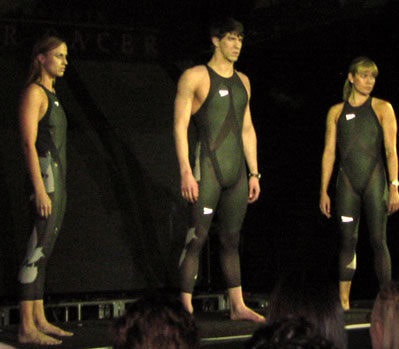









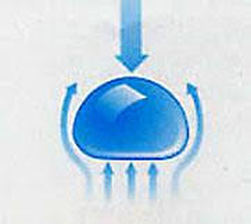




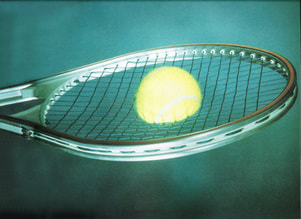

 RSS Feed
RSS Feed
